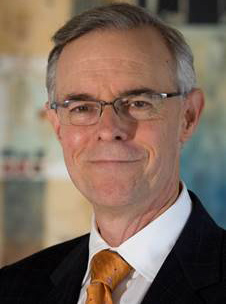Bringing the Cloud Down to Earth: A Conversation With Al Kovalick

Graphic courtesy of Elemental Technologies
ALEXANDRIA, VA.—Interest and activity in the cloud is exploding, especially in television. There’s still a lot of mystery and confusion about how the cloud works and what it means to video operations, so it was time to take a look at what the cloud can do for broadcasters.
To learn more about the cloud and how it impacts broadcasters, Broadcast Engineering Extra spoke to Al Kovalick. Al is the founder of Media Systems Consulting. Previously, he was a Corporate Fellow at Avid, CTO of Pinnacle Systems and Video Systems Architect at HP. He is an active speaker and educator, and has penned the book “Video Systems in an IT Environment—The Basics of Networked Media and File-Based Workflows (2009).”
Al has an MSEE degree from the University of California at Berkeley, holds 13 US patents and has authored more than 50 papers. He is a SMPTE Fellow and recipient of the David Sarnoff Gold Medal.
BE Extra: Why should a broadcaster consider integrating cloud video services? Is this something a local broadcaster can use, or is it more of a network concern?

Al Kovalick
Kovalick: The migration to the cloud will occur in layers. First will be the Software-as-a-Service (SaaS) cloud apps that support office operations such as HR, accounting, sales, payroll and other non-media (example, zenefits.com). Media, archive storage, file conversion/processing and MAM are migrating to the cloud. Real-time broadcast workflows will stay local for most stations. Pick the low hanging fruit first.
Get the TV Tech Newsletter
The professional video industry's #1 source for news, trends and product and tech information. Sign up below.
BE Extra: Migrating operations to the cloud often means spending less on capital equipment and more on operations. How has this worked out for broadcasters in actual experience? Are the savings in capital expense eaten up by operating costs, or are there savings involved?
Kovalick: SaaS apps are a definite money saver. Many companies use SaaS apps to run their business. A new breed of SaaS apps for media is available. For some media examples see tinyurl.com/TVT-SaaS. The cloud adores peaky, irregular workflows, and these often make economic sense.
BE Extra: Cloud operations opens up possibilities for over-the-top video services. What sort of latency can be expected from transcoding and distribution in the cloud? Will you hear your neighbors cheering the touchdown while you’re still watching a time out?
Kovalick: First, let’s look at cable and satellite TV channels; many seconds of delay compared to over-the-air. OTT has comparable delays, or even less, but this is of little concern in practice. The cloud does not inherently add seconds of delay, workflow processes do. Some cloud round-trip processes are in the order of 150 ms so this will not be an issue for many workflows.
BE Extra: What are some of the challenges to processing video in the cloud? Are there instances when you would NOT want to do this?
Kovalick: Non-real-time processes (files) are best since the end-to-end delay variation is acceptable. Real-time processes (streams), on the other hand, can be problematic. The cloud is not great for guaranteed, non-varying, performance. So, users need to pick workflows that can tolerate performance variation or design around it. Cloud performance is improving daily, so stay tuned.
BE Extra: How important are security and reliability still? Have vendors made significant strides in enough areas so this is not as much of a concern anymore?
Kovalick: Regarding reliability, users must design for failure. Don’t depend on SLAs or MTBFs, depend on “failure happens.” A workflow can be partitioned across multiple servers, cloud availability regions and even different cloud vendors. Smart implementations are based on managing failure intelligently.
Cloud security is “world class” today. Security is a shared responsibility; part cloud vendor, part end user.
BE Extra: What is the meaning of “virtualization” with respect to cloud video services? Is this something that broadcasters need to be aware of?
Kovalick: Cloud resources are normally virtualized; storage, compute and networking. For example, users see compute as a service and don’t care what physical systems it runs on. This is the basis of virtualization—separating the physical from the virtual. Many different users can share the same server because virtualization carves out isolated compute environments for each user. The same thinking applies to storage and networking.
Bob Kovacs is the former Technology Editor for TV Tech and editor of Government Video. He is a long-time video engineer and writer, who now works as a video producer for a government agency. In 2020, Kovacs won several awards as the editor and co-producer of the short film "Rendezvous."

